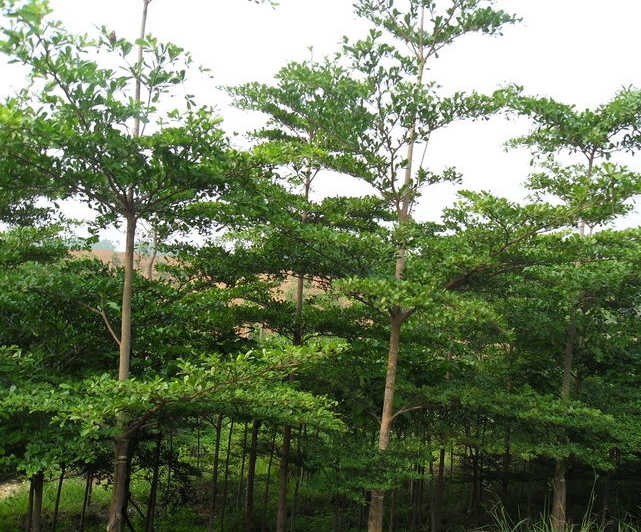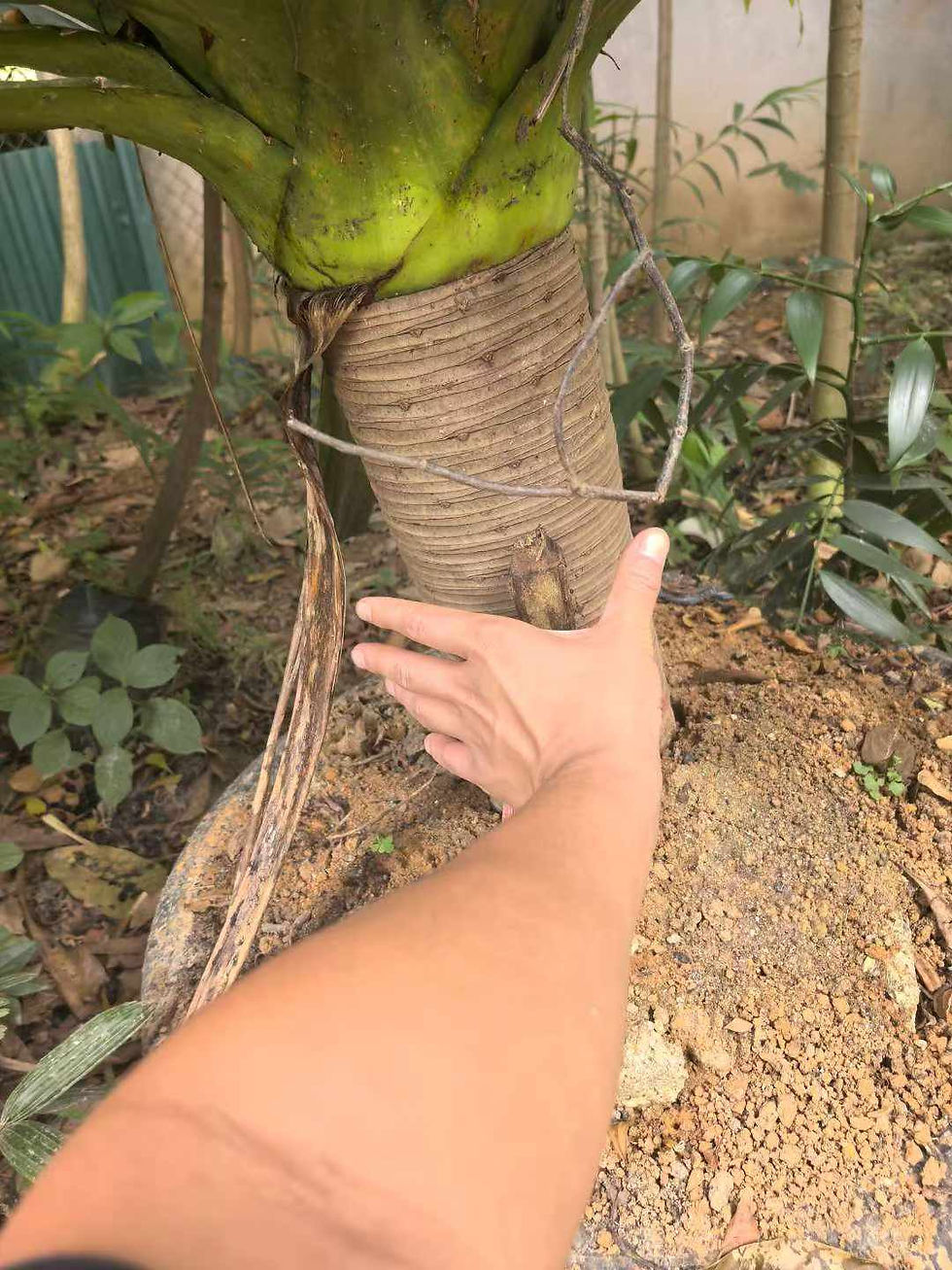Terminalia mantaly / Madagascar Almond / Umbrella Tree / seeds
Seeding: Terminalia mantaly, also known as Madagascar almond, begins its cultivation process from seeds. Collect seeds from mature fruits and soak them in water for a few days to soften the hard outer shell. Once softened, plant the seeds directly in well-draining soil or in nursery containers. Ensure the seeds are planted at a depth of about 1 inch and maintain consistent moisture levels until germination, which typically occurs within 2-3 weeks.
Planting: When seedlings have developed several sets of true leaves and are robust enough for transplanting, they can be planted outdoors. Terminalia mantaly thrives in tropical climates with full sun exposure and well-drained soil. Planting should be done with spacing of approximately 20-30 feet between trees to allow for their spreading canopy. Regular watering, especially during the establishment phase, is essential for promoting healthy root development and overall growth.
Medicinal Applications: Terminalia mantaly has a history of use in traditional medicine systems for its various medicinal properties. Different parts of the tree, including the bark, leaves, and fruits, are utilized to prepare herbal remedies for treating conditions such as digestive disorders, inflammation, and skin ailments. The bioactive compounds found in Terminalia mantaly, including tannins and flavonoids, contribute to its therapeutic effects.
Scientific Research: Terminalia mantaly is a subject of scientific research aimed at exploring its pharmacological properties and potential therapeutic applications. Studies have investigated its antioxidant, antimicrobial, anti-inflammatory, and antidiabetic properties. Researchers are also interested in elucidating the mechanisms of action of Terminalia mantaly compounds and evaluating their efficacy in treating various diseases and disorders.
Textile Industry: Terminalia mantaly leaves contain tannins, which have traditionally been used in textile dyeing processes. Extracts from the leaves can be used to dye natural fibers such as cotton, silk, and wool, producing shades of brown, red, and black. Terminalia mantaly-based dyes are valued for their natural origin and ability to impart colorfastness to textiles.
Industrial Materials: Terminalia mantaly wood is prized for its strength, durability, and attractive grain patterns, making it suitable for various industrial applications. The wood is used in furniture making, cabinetry, flooring, and boat building. Additionally, Terminalia mantaly leaves are sometimes used as a renewable source of biomass for energy production and as natural mulch in agriculture and landscaping.
Landscaping and Greening Applications: Terminalia mantaly is often utilized in landscaping and greening projects due to its ornamental value and ability to provide shade. The tree's spreading canopy and lush foliage make it an attractive choice for parks, gardens, and urban green spaces. Its tolerance to a wide range of soil types and environmental conditions further enhances its suitability for landscaping purposes.
In summary, Terminalia mantaly is a versatile tree species with diverse applications in medicine, scientific research, textile dyeing, industrial materials, and landscaping. Its cultivation and utilization offer numerous benefits, ranging from traditional healing remedies to sustainable resource management and beautification of outdoor spaces.
Details
Terminalia mantaly tree is harvested from the wild for local use as a medicine and source of dyes and tannins. It can be used in reforestation projects and is a good shade tree, often being grown as an ornamental and to provide shade along streets.
A plant of the semi-arid to moist tropics, where it can be found at elevations up to 1,500 meters
It grows best in areas where the mean maximum and minimum annual temperatures are within the range 20 - 28°c, though it can tolerate 15 - 36°
It prefers a mean annual rainfall in the range 500 - 1,200mm, though can tolerate from 300 - 1,500mm
Requires a sunny position
Prefers a well-drained, medium to light soil
Established plants are drought resistant
Prefers a pH in the range 5.5 - 7, tolerating 5 - 7.5
A fast-growing plant when on a good site

































